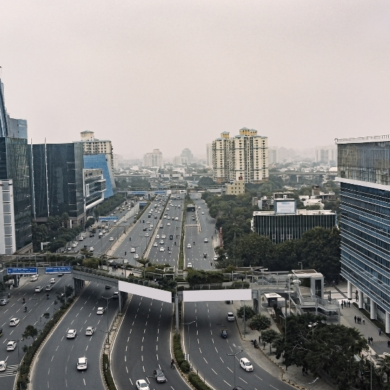
In 2024, India’s real estate market is set for transformation, fueled by urbanization and evolving consumer preferences. This blog highlights key trends and opportunities, offering insights into the future landscape of Indian real estate.
Real estate is one of India’s most dynamic sectors, driven by an ever-growing middle class, affluent upper-middle class, rapid urbanisation, and increased urban employment. The sector is also a major employment generator, like agriculture.
In 2023, luxury home sales surged by 75%, doubling their share in total housing sales, reflecting growing demand for high-end properties. By 2030, India’s real estate market is expected to reach US$ 1 trillion in market size. All these highlight the sector’s vital economic role and its significant potential for investors.
Table of Contents
Covid-19 and its Impact on Indian Real Estate Sector
Owing to the Covid-19 outbreak, property markets around the world have seen massive setbacks. The situation was not different in India. Thus, in 2020 and 2021, India saw a dip in growth for the real estate sector. It is estimated that the outbreak, which brought the country to a standstill, caused a loss of over ₹1 lakh crore to the property market. As per a report by India Ratings, the first half of the year 2021 saw residential demand declining by 40%.
The Resurgence of India’s Property Market
Despite the initial challenges, the COVID-19 pandemic reshaped investor sentiment in India’s real estate sector, prompting increased institutional interest despite global economic uncertainties. Government initiatives, such as Maharashtra’s waiver of premiums for redevelopment projects and Karnataka’s stamp duty exemptions, further bolstered market confidence.
- Long-term Effects and Institutional Investment: JLL India reports a noteworthy increase in institutional investments in residential real estate post-pandemic. This upward trend, expected to continue through 2024, underscores the sector’s resilience and promising growth prospects.
- Evolving Consumer Behaviour and Market Dynamics: Post-pandemic, there has been a remarkable shift in consumer behaviour towards prioritising homeownership as a necessity. This surge in end-user demand has compelled developers to innovate and tailor offerings to meet changing preferences and elevate living standards.
Real Estate Market in India: 2024 Overview
India’s real estate sector is expected to contribute 13% to the country’s total GDP by 2025, highlighting its growing economic significance. According to IBEF (India Brand Equity Foundation), the property market in India is set to exhibit a compound annual growth rate (CAGR) of 9.2% from 2023 to 2028. This outlook positions India’s real estate for significant growth and reinforces its pivotal role in the nation’s economic development.
Market Size of Real Estate in India Over the Years
Over the years, the property market in the country has scaled new heights, generating more revenue, thus making it one of the most important sectors in the country. Here is a glimpse of the growth story.
| Year |
Market Size (Billion Dollars) |
| 2022 | 3704.02 |
| 2023 | 3901.07 |
| 2024 | 4108.61 |
| 2025 | 4327.19 |
| 2026 | 4557.4 |
| 2027 | 4799.85 |
| 2028 | 5055.2 |
| 2029 | 5324.14 |
| 2030 | 5607.38 |
| 2031 | 5905.69 |
| 2032 | 6219.88 |
Source:www.precedenceresearch.com
9 Factors Driving Real Estate Growth: 2022-2032
India’s real estate market has experienced dynamic growth over the years, and the future looks promising with many key factors contributing to this trend. From 2022 to 2032, various elements have played and will continue to play a pivotal role in shaping the real estate landscape.
- Expansion in Market Size: Real estate has seen consistent expansion, driven by increasing demand for residential, commercial, and industrial spaces. Population growth, urbanisation, and rising income levels have fuelled this expansion, leading to a surge in both new developments and real estate transactions.
- Luxury Real Estate Boom: The luxury segment has witnessed a significant boom, with high-net-worth individuals seeking premium properties that offer exclusivity and state-of-the-art amenities. This trend has been driven by increasing disposable incomes, global exposure, and a desire for a sophisticated lifestyle.
- Commercial Real Estate Boom & Greater Absorption of Office Spaces: The IT industry, startups, and MNCs have been major contributors – seeking modern and well-equipped office spaces to support their operations. This demand is expected to continue, bolstering the commercial real estate market.
- Urbanisation and Demographic Shifts: Urbanisation is in full swing, with more people moving to cities for better employment opportunities and elevated living standards. Demographic shifts, such as the rise of nuclear families and the influx of young professionals, have increased the demand for urban housing. This trend is set to persist, driving the need for more residential developments.
- Infrastructure Push: Government initiatives focused on infrastructure development have had a substantial impact on real estate growth. Projects like metro rail expansions, improved road networks, and smart city developments have enhanced connectivity and accessibility, making areas more attractive for real estate investment.
- Foreign Investments: These have played a crucial role in the growth of the sector. Relaxation of foreign direct investment (FDI) norms and attractive returns have attracted global investors, bringing in capital and expertise that have boosted the development of high-quality projects.
- Integrated Lifestyle: The demand for such projects has surged, with buyers seeking self-sufficient communities that offer residential, commercial, and recreational facilities within a single development. These integrated townships provide convenience and holistic living experience, driving their popularity.
- Real Estate as a Potential Investment: Due to its potential for stable returns and capital appreciation, real estate remains a favoured investment option. Investors view it as a safe asset class that can hedge against inflation and economic uncertainties, leading to sustained interest and investment in the sector.
- Increase in Real Estate Hotspots: Driven by factors such as improved infrastructure, strategic locations, and government incentives, new real estate hotspots have emerged. These hotspots offer attractive investment opportunities, further fuelling the growth of the real estate market.
Policy Reforms and Regulatory Environment
As we have already seen, the Indian property market is expanding rapidly. While an increase in the earning potential of the middle class and growing aspiration among customers can be partially attributed to the growth of this sector, it is also spurred by governmental policies and regulations. Let us look at some of the reforms and regulations pivotal in the growth of the real estate industry in the country.
-
Real Estate (Regulation and Development) Act (RERA)
The Real Estate Regulatory Authority introduced the RERA Act in March 2016. Intended to ensure transparency and accountability in the sector, RERA protects the interest of all stakeholders and ensures speedy resolution in case of disputes. Naturally, homebuyers are more confident investing their money in the market.
The All-India Forum of RERAs (AIFORERA), a voluntary organisation of real estate authority members from various states, held a meeting in Lucknow on March 19 and 20, 2024 to discuss homebuyer feedback. AIFORERA Chairperson Shrikant Baldi, who is also the Himachal Pradesh RERA Chairperson, announced that a checklist would be sent to all state RERAs outlining the required website information.
-
Amendment to the Benami Transactions Act
This act aims to curb black money and corruption in India by prohibiting benami transactions, where the real beneficiary of a property is not the one in whose name it is purchased. The Act was amended in 2016 and renamed the Benami Transactions (Prohibition) Amendment Act, 2016, to strengthen and enhance its enforcement.
In 2022, the Supreme Court of India declared Section 3(2) of the Benami Transactions (Prohibition) Act, 1988 unconstitutional, citing it as manifestly arbitrary. Section 3(2) specifies the punishment for engaging in benami transactions. The judges ruled that the 2016 amendment to the Act can only be applied prospectively, thereby nullifying all prosecutions and confiscation proceedings initiated before the amended Act came into effect.
-
Goods and Services Tax (GST)
After prolonged deliberations, the central government rolled out the eagerly awaited GST on July 1, 2017. Its major impact was that it made homebuying simpler by removing the complexities of multiple taxes such as excise duty, VAT, and service tax. In turn, it helped the homebuyer reduce their tax outgo by nearly 11%.
-
Permanent Residency Status for Foreign Investors
To encourage FDI in the country’s property market, government of India offers permanent residency status for foreign investors for a period of 10 years. To be eligible, investors should fulfil certain conditions. This major move is attracting foreign investors on a large scale to the country, strengthening the booming property market further.
-
Foreign Direct Investment (FDI) in Real Estate
For long, real estate has been one of the most protected industries in India. But the decision of the government to allow FDI in the sector under the automatic route is bringing a massive change to the country’s property market. FDI is also expected to pave way for certain international trade practices into India’s real estate sector.
According to JLL India, foreign investors injected USD 3.1 billion into Indian real estate between January and June 2024, making up 65% of the total institutional investment. The report also indicated that total institutional investment in real estate surged by 62%, reaching USD 4.76 billion in January – June 2024, compared to USD 2.939 billion during the same period last year.
-
Infrastructure Status to Affordable Housing
The government of India’s decision to grant infrastructure status to affordable housing has given a fillip to the sector. As a result, such projects can avail low borrowing rates, tax concessions, and increased capital inflow – private as well as foreign.
100% Deduction in Profits for Affordable Housing Construction: Housing costs in the cities – especially major ones such as Mumbai, Delhi, Bangalore – have been skyrocketing, taking it beyond the reach of people who come under low-income brackets. Applicable to flats up to 30 square metre in metro cities and 60 square metre in non-metro cities, this proposition will encourage developers to create affordable housing.
In the 2024-25 interim Budget, Finance Minister Ms. Nirmala Sitharaman announced a significant enhancement for India’s affordable housing sector by allocating an additional 2 crore houses to the flagship scheme PMAY-U.
Emerging Trends and Shifts in Real Estate
India’s real estate sector is a major contributor to the economy. By 2034, it is projected to expand to USD 1.5 trillion, contributing 10.5% to the economic output. The sector’s strong forward and backward linkages with 250 ancillary industries make it a significant employment generator, supporting 18% of total employment.
4 Drivers of Expansion in Indian Real Estate
Many factors are driving the growth of India’s real estate sector. These include increasing residential demand, and the need for modern office spaces to cater to a growing population with higher income levels. The rise of e-commerce is boosting demand for warehousing facilities and driving investment in data centres – thus fostering investment opportunities in the sector.
-
Shift towards luxury housing
India’s residential housing market has shifted with rising incomes and economic growth. While historically it focused on affordable and mid-segment housing, there is now a notable surge in demand for luxury homes above ₹1 cr – driven by high-paying jobs in IT / ITeS, BFSI, and other sectors.
Luxury housing sales in India’s top 8 cities grew from 16% in 2018 to 34% in 2023. Continued economic expansion, salary increases in key sectors, and a rising number of HNIs and UHNIs will sustain and expand this trend.
-
Thriving Commercial Real Estate
India’s commercial real estate is booming, with global interest and new developers attracting investment. Government incentives like SEZs are further fuelling this growth. Despite a global trend towards remote work, India’s office market remains resilient, with major cities leasing 60 million sq ft in 2023.
A thriving IT/BPM sector, global capability centres, and coworking spaces are key drivers. Looking ahead, tech expansion in AI and data science, along with a surge in GCCs (expected to reach 2880 by 2034), will solidify India’s position as a tech hub – ensuring continued demand for commercial real estate.
-
Warehousing Attracting Global Investments
India’s warehousing sector has evolved significantly, transitioning from an unorganised market to one attracting global investments. This transformation is driven by rising domestic consumption, organised retail growth, and enhanced supply chain resilience post-COVID-19.
Government initiatives such as Free Trade and Warehousing Zones, Warehousing Act, and National Logistics Policy have further boosted the sector. Economic reforms such as GST have accelerated formalisation, making warehousing increasingly attractive to institutional investors.
-
Industrial Expansion
India is poised to become a global manufacturing hub, reducing dependency on China and boosting output to potentially reach 21.3% of GDP by 2034. This growth necessitates significant expansion of industrial infrastructure, including 20 lakh hectares of additional land allocation over the next decade under initiatives like the National Industrial Corridor Development.
Current industrial land use includes SEZs and industrial parks, with plans for substantial expansion to support manufacturing. This development surge is projected to generate revenue of USD 28 billion by 2034. Source: Indian Real Estate: a decade from now
Indian Real Estate Sector: Investment Opportunities and Market Outlook
As of 2024, the Indian real estate sector continues to present promising investment opportunities amidst a recovering economy and evolving market dynamics. Key trends and statistics highlight robust growth prospects:
Investment Opportunities
- Residential Sector: The demand for affordable housing remains strong, with significant growth in mid-segment housing across major cities. Luxury housing segments are also gaining traction, driven by rising incomes and urbanisation.
- Commercial Sector: Despite global trends towards remote work, India’s office market has shown resilience. Major cities leased office space in, driven by the IT/BPM sector and global capability centres.
- Warehousing and Logistics: The sector is witnessing transformational growth due to increased domestic consumption, organised retail expansion, and strengthened supply chains post-COVID.
Market Outlook
- The real estate market size in India is projected to grow significantly, with the residential segment leading the charge. By 2029, the market is expected to reach USD 1.04 trillion, growing at a CAGR of 25.6%.
- Commercial real estate, particularly office spaces, will continue to evolve with the expansion of global capability centres and the tech sector’s growth in AI and data science.
Emerging Cities for Investment
Tier-II and Tier-III Cities: Cities like Bangalore, Delhi (NCR), Coimbatore and Hyderabad, are emerging as attractive investment destinations due to lower operational costs, improving infrastructure, and growing urbanisation. Here’s why these cities stand out:
- Bangalore: Supported by projects such as Bangalore Metro Phase 2 and Peripheral Ring Road, the city’s tech ecosystem is thriving. High GDP growth and skilled workforce make it a prime location for commercial and residential investments.
- Delhi (NCR): The National Capital Region – that includes Gurgaon, Noida, & Greater Noida – offers diverse investment opportunities. Infrastructure projects such as Regional Rapid Transit System (RRTS) and metro expansions boost the real estate market. Its strategic location as a political and commercial hub ensures steady demand.
- Coimbatore: Known for industrial growth in textiles and manufacturing, Coimbatore benefits from infrastructure projects like Western Bypass Road and the airport expansion. Lower property prices and a high quality of life make it an attractive investment destination.
- Hyderabad: With major IT companies and world-class infrastructure – including Hyderabad Metro Rail and Outer Ring Road – the city offers affordable real estate prices and business-friendly policies, making it a lucrative investment option.
This outlook underscores India’s potential as a profitable market for real estate investment, supported by favourable government policies and increasing urbanisation trends.
Read More: Bangalore Real Estate Market Trends 2024
India’s Property Market: 6 Challenges and Their Solutions
A few challenges that you can consider are workforce shortage, construction costs, land acquisition complexities, regulatory compliance under RERA, financing constraints, and sustainability requirements. Read on to know their solutions.
-
Workforce Dependency
One of the primary challenges facing the Indian property market is heavy reliance on workforce availability. In 2023, the construction sector faced a notable shortage of skilled labour. This shortage poses risks of project delays and potential legal complications due to missed deadlines.
Solution: Encouraging automation and adopting advanced construction technologies can reduce dependency on manual labour, improving efficiency and productivity.
-
Escalating Construction Costs
Rising prices of construction materials present another significant challenge. Increased costs add financial strain to developers and impact project feasibility & profitability.
Solution: Adopting alternative, cost-effective materials and construction methods can help manage expenses. -
Land Acquisition Complexities
Acquiring suitable land remains a complex and time-consuming process in India. Developers often encounter hurdles such as bureaucratic red tape and legal intricacies, delaying project timelines and increasing overheads.
Solution: Streamlining the land acquisition process through better planning and early engagement with local authorities can reduce delays. Hiring legal experts to navigate land acquisition laws and regulations can also expedite the process.
-
Regulatory Compliance under RERA
Since the implementation of RERA Act, developers must comply with stringent regulatory requirements. This includes providing transparent, timely updates to buyers about project progress and completion timelines.
Solution: Implementing robust project management and communication systems can ensure timely updates and transparency. Regular training for staff on RERA compliance can help avoid legal issues and maintain buyer trust.
-
Financing Constraints
Stringent lending norms imposed by financial institutions have made it increasingly difficult for developers to secure financing for their projects. This constraint on liquidity poses a significant hurdle to project execution and completion.
Solution: Exploring alternative financing options such as real estate investment trusts (REITs), crowdfunding, and private equity can provide necessary liquidity. Building strong relationships with financial institutions and maintaining a solid credit history can also facilitate access to traditional financing.
-
Sustainability Requirements
Growing awareness and regulatory pressures for sustainable practices in real estate development have led to additional costs and time investments. Developers must incorporate eco-friendly practices, further impacting project timelines and financial viability.
Solution: Incorporating sustainable practices from the project planning stage can reduce costs in the long run. Utilising green building materials, energy-efficient designs, and renewable energy sources can attract eco-conscious buyers and reduce operational costs. Seeking certifications like LEED (Leadership in Energy and Environmental Design) can also enhance project credibility and marketability.
Indian Real Estate Sector: The Way Forward
In 2024, India’s real estate sector shows resilience post-pandemic, driven by reforms like RERA and robust economic fundamentals. Demand is strong across residential, commercial, and industrial sectors, with emerging opportunities in affordable housing and sustainability. Despite regulatory challenges and rising costs, embracing technology and sustainability will foster growth.
Government initiatives remain crucial in shaping the sector’s future, highlighting its pivotal role in India’s economic landscape. With a proactive approach, the industry can enhance urban infrastructure and improve quality of life, cementing its position as a key driver of economic growth
FAQs
1. What is the future of real estate industry in India?
The future of real estate industry in India is bright, with 2023 & 2024 being recognised as boom years. Given these insights, the future of India's real estate industry looks highly promising, and the industry is set for significant growth.
2. What is the future of real estate in India 2025?
The future of real estate in India 2025 indicates steady growth according to many think tanks and experts. Many consider this year to be pivotal for the industry.
3. What will Indian real estate be in 2030?
Indian real estate in 2030 will be outstanding, as the industry is projected to reach USD 1 trillion by 2030 according to reports. 2023 and 2024 were landmarks in India’s real estate sector, and the momentum will continue in the coming years.
4. Will property prices fall in 2024 India?
No, property prices will not fall in 2024 because 2023 saw unprecedented growth, and the momentum has continued in 2024.
5. In which city in India real estate is booming?
Real estate is booming in many cities of India, such as Bangalore, Kolkata, Mumbai, Delhi, Chennai, and Hyderabad. Additionally, other cities experiencing real estate boom are Gurugram, Noida, Pune, Faridabad, Lucknow, Chandigarh, and Ahmedabad.
6. Is 2024 a good year to buy a house in India?
Yes, 2024 is a good year to buy a house in India as 2023 was hailed as a boom year and the trend is expected to continue with growing demand and rising prices. So, it is advisable to purchase a home in India now, as prices are anticipated to continue growing in the coming years.
7. Is the Indian real estate market expected to grow in the coming years?
Yes, the Indian real estate market is expected to grow in the coming years, due to factors such as government initiatives, rising urbanisation, and increasing disposable income.
8. What are some of the key growth drivers for the Indian real estate market?
Some of the key growth drivers for the Indian real estate market are government efforts like affordable housing programs, smart city initiatives, and the expanding urban population.
9. Are there any challenges facing the Indian real estate market?
Few challenges facing the Indian real estate market are unsold inventory, delays in projects, and need for reforms in regulatory practices & transparency.
10. Is real estate a good investment option in India?
Yes, real estate is a good investment option in India, with excellent potential for both capital appreciation and rental income. However, diligent research and strategic long-term planning are essential for success.
11. What are some of the investment avenues in Indian real estate?
Some of the investment avenues in Indian real estate are residential properties, commercial spaces like office buildings, and Real Estate Investment Trusts (REITs).
12. What factors should I consider before investing in Indian real estate?
Factors you should consider before investing in Indian real estate are location, type of property, developer reputation, market trends, and legal requirements.
13. Which segment of the residential market is expected to perform well?
Segments of the residential market expected to perform well are affordable and mid-range housing – primarily driven by rising urbanisation and increasing disposable income. Luxury housing will see growth in metropolitan areas where there is strong demand from affluent buyers.
14. Are there any new trends emerging in the residential sector?
Yes, the new trends emerging in the residential sector are co-living spaces and senior living facilities, as they cater to specific demographics seeking community-based living arrangements and specialised housing amenities.
15. How will the demand for office spaces change post-pandemic?
The demand for the office spaces has changed post pandemic, with remote working on the decline and most of the companies asking employees to work from office 3-5 days a week. There is also a potential increase in the demand for co-working spaces as businesses adapt to flexible work environments.
16. Are there any other sectors showing promise in commercial real estate?
Yes, there are other sectors showing promise in commercial real estate, such as warehousing facilities benefiting from e-commerce growth, office spaces for the emerging business hubs, and retail properties in high traffic urban areas.
17. Where can I find more information about the Indian real estate market?
You can find more information about the Indian real estate market from various online resources, real estate portals, and industry publications – some of which are National Real Estate Development Council (NAREDCO), Confederation of Real Estate Developers' Associations of India (CREDAI), Ministry of Housing and Urban Affairs, Government of India; portals such as Magicbricks, 99acres, Housing.com, Commonfloor; and publications such as Property Times (by Knight Frank), and India Real Estate Report (by JLL).










